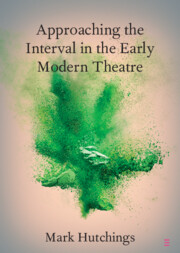Element contents
Approaching the Interval in the Early Modern Theatre
Published online by Cambridge University Press: 12 April 2024
Summary
- Type
- Element
- Information
- Online ISBN: 9781108866842Publisher: Cambridge University PressPrint publication: 25 April 2024



